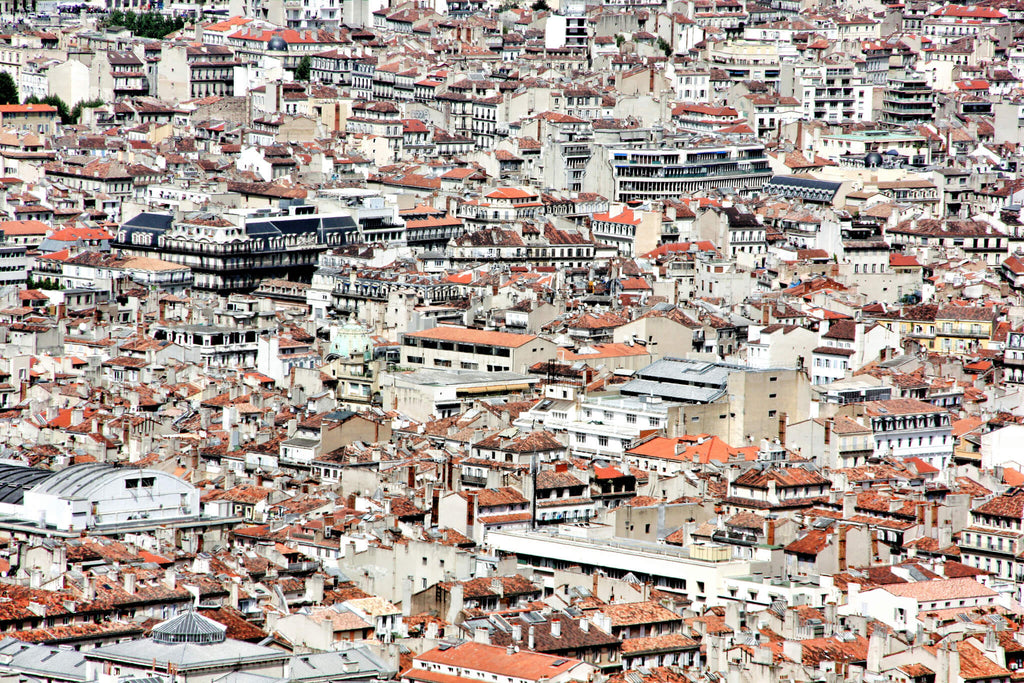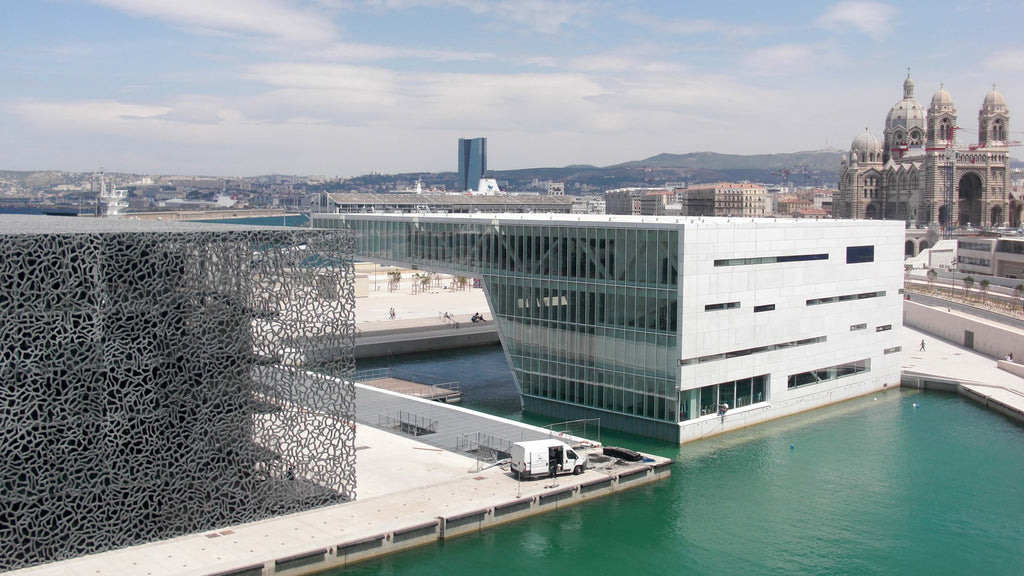the sunday guide to // marseille

When we travel, we like to take things easy. Rather than trying to cram in as much as possible during a short city break, we recommend slowing things down and wandering around your new location at a relaxing pace. You’re supposed to be on holiday after all, and that means unwinding, even if you’re in the midst of a thriving metropolis. This week, we’re sharing our secrets for how to have a relaxing weekend getaway to Marseille.
marseille //
Whilst cities further east along the Cote d’Azur (such as Nice and Cannes) are associated with luxury and glamour, Marseille gained somewhat of a bad rep throughout the past couple of decades. All this changed in 2013, when it was named that year’s European Capital of Culture. A huge clean-up of the city resulted in the rejuvenation of historic areas of the city alongside an injection of new modern structures and an ongoing programme of intriguing cultural events and exhibitions. The new direct Eurostar from London means getting there is easier than ever, elevating Marseille to the perfect destination for a long weekend getaway where you can soak up the diverse culture. As France’s largest port, various nations have left their imprint here with obvious Greek, Russian, Italian, Spanish and North African influences throughout the city.
 photo: martin fisch
photo: martin fisch
stay //
If you’re a fan of Brutalist design who is looking for a relaxing abode where you can enjoy views of the city from above, Hotel le Corbusier is the perfect place to rest your head. The dramatic concrete structure features a rooftop pool where you can float serenely far above the busy streets and calm yet directional rooms with floor-to-ceiling windows allowing the light to flood inside. It’s perfectly located, within easy walking distance of Parc Borely and the beach, yet not too far from the centre of Marseille.
wander //
Previously one of the most run-down districts in the city, the waterfront area of Panier is now one of Marseille’s most impressive. It’s here that the two contrasting sides of the city are the most evident, with the 17th Century Fort Saint-Jean sitting side-by-side with the dramatic modernist structure of the Museum of European and Mediterranean Civilisations. Spend some time slowly ambling around the area, nipping in to MuCEM and admiring Ombriere (a striking mirrored canopy) as you pass them by. There’s plenty to discover as you wander up hill and down the tiny winding streets, admiring the old buildings adorned with pastel shutters, floral displays and the occasional piece of intriguing street art. Stroll by the port to watch the boats come in, before seeking out one of the local restaurants famed for their fresh seafood, such as Schilling. The area is also the best place to purchase the olive oil-based soap that Marseille is famed for: La Grande Savonnerie is one of the last remaining companies using the traditional methods.
 photo: via wikipedia
photo: via wikipedia
discover //
MuCEM (the Museum of European and Mediterranean Civilisations) is one of Marseille’s most important cultural centres, although there are many more museums and galleries waiting to be explored. Perhaps the city’s best known contemporary structure, MuCEM is worth a visit even if you plan to simply admire the architecture, but the exhibits inside are also worth investigating. As France’s most important port, Marseille has a rich history that delves into many diverse Mediterranean cultures, all of which are explored within the museum. Alongside history and art, the topics of worship, cuisine, travel and gardens are also touched upon, providing interest for anyone with an interest in anthropology or history.
 photo: noel bauza
photo: noel bauza
visit //
Escape the city and take a scenic trip to the Calanques National Park, only a short journey from Marseille to admire the dramatic limestone cliffs and crystal-clear aquamarine waters. From October until June visitors can walk along marked trails on top of the cliffs and through the surrounding area. Although summer visitors are confined to the sea, this is perhaps the most relaxing way to view the scenery. Ensure that you book onto a boat trip that allows time to meander in the area, giving you the opportunity to dive into the sea and swim beneath the towering cliffs towards isolated beaches.
 photo: via bucketlistly
photo: via bucketlistly
explore //
Marseille is the perfect base for exploring both the French Riviera and Provence, but if you’re only planning a short trip, we recommend saving the long drives for another time and taking a twenty minute boat journey to Île de Porquerolles. This quiet little island is reminiscent of Corsica twenty years ago, with serene white beaches backed by pine forests and a distinct lack of development. There’s only one village on the island, offering a small selection of family-run traditional restaurants with a focus on seafood. It does get busy with predominantly French tourists around the harbour, but if you wander further afield you are sure to discover a hidden cove where you can lie on the sand and relax for a few precious hours in peace.
drink //
Once the sun sets, head to the Old Port to admire the view of the city lit up at night. You’ll find an abundance of bars and restaurants scattered around the water, many of which require advance bookings to secure a table with a view where you can spend your evening unwinding and watching the world go by with a glass of local wine in hand. We recommend heading to Pauletta, where you can enjoy the menu of traditional regional dishes such as bouillabaisse or simply sit and slowly sip a drink as you watch the sun set over the water.



 photo: martin fisch
photo: martin fisch photo: via wikipedia
photo: via wikipedia photo: noel bauza
photo: noel bauza photo: via bucketlistly
photo: via bucketlistly photo: nicolas vigier
photo: nicolas vigier